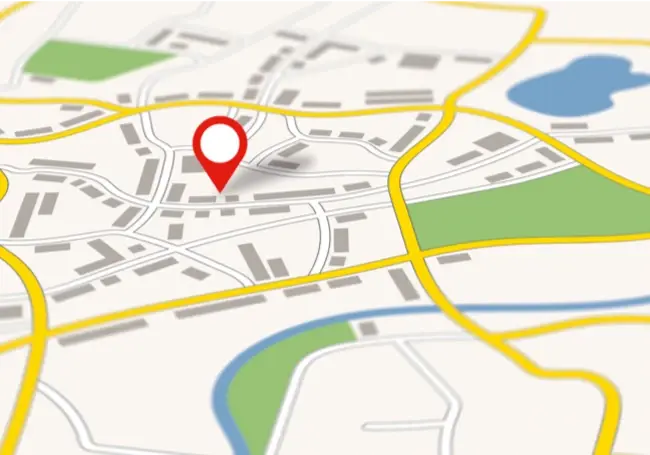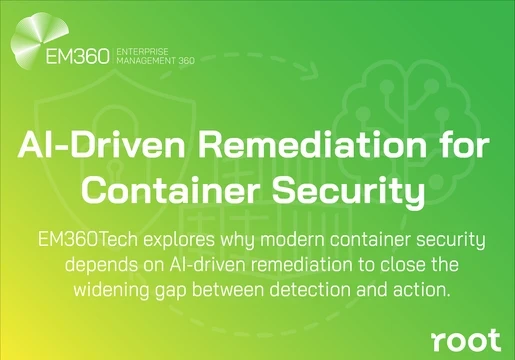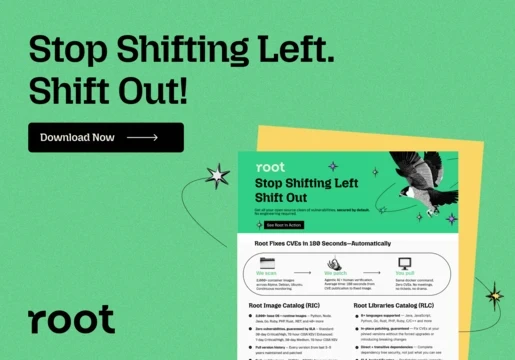If you want to boost sales, satisfy more customers, and improve operations, here’s how location intelligence can help.
Why do some companies thrive and others fail? What secrets do large firms and retailers have that give them the upper edge? Location intelligence.
We've been trailblazers in the geospatial space since 1993, and after working with over ten thousand customers, we know that location intelligence is the secret sauce your business needs.
But you don't just have to take our word for it—85% of large retailers say location data is very important, and 63% of business executives say they are happy with the ROI location data has provided.

Why Should You Use Location Data and Location Intelligence?
Here are a few reasons why:
- Location data, or “spatial data” can help you decide the best site for your business. With location data, executive teams can make better business decisions by analyzing customer traffic, population, income, and projected site growth. This data truly can be the key to whether or not a business survives, thrives, or fails.
|
Real-world example: McDonald's China uses spatial data to power business decisions such as new restaurant site selection, growth modeling, and delivery modeling. |
- Location data can be used for real-time insight that boosts customer satisfaction. For businesses that deal with shipping or delivery, the ability to share with the customer exactly where their product is at any given time has a huge impact on customer happiness. It can also result in fewer calls to customer service, as customers can find this information themselves.
|
Real-world example: Uber Eats uses a display map to show exactly where your courier is and how long they will take to arrive at your location. |
- Location data can be used for real-time advertising or emergency notifications. Smartphones have revolutionized the way we communicate. With their geolocation features, it means you can send alerts when the user is in a specific location. Advertisers are already taking advantage of this, but there is an enormous opportunity here for other departments as well. For example, a telecommunications company can send geolocation-based alerts to their field teams to alert them about assets in the area.
|
Real-world example: The City of Levis has a public web application that uses incoming geolocation data to notify the city of a pothole and deliver automatic work orders. |
|
Real-world example: McDonald's China uses spatial data to power business decisions such as new restaurant site selection, growth modeling, and delivery modeling. |
- Location data can be paired with augmented reality. AR depends on spatial mapping to place virtual objects into the real world. Many businesses are using AR to allow customers to see their products in their actual space before purchasing. However, there are more spatial opportunities for AR. AR wayfinding is an emerging solution for companies who want to make it easy for visitors to find their destinations. AR can direct them using a virtual pathway displayed through their phone’s camera.
|
Real-world example: Navigating the Safe Software office using augmented reality. |
- Location data can mean the difference between success and failure for companies that depend on environmental factors, such as agriculture or energy. If this data is not able to reach field teams and decision-makers, it can have expensive and even disastrous outcomes.
|
Real-world example: Athena Intelligence combines datasets of land, food, water, and energy to maximize food supply chains and resources. |
- Location data can help us understand global patterns for healthcare and more. The most recent example is the COVID-19 pandemic. Location data can help us monitor the disease spread and aid in the recovery.
|
Real-world example: Bluedot monitors worldwide infectious disease spread (like COVID-19) using data integration and artificial intelligence. |
- Location data offers practical and unique segmenting. Marketing departments are constantly looking for ways to narrow their target audience because advertising to everyone is not effective. With location intelligence, you can choose your audience and create personalized offers that get results.
|
Real-world example: Compare these email open rates for our FME World Tour 2020: No segmenting (worldwide): 20% open rate, segmented to Canada-wide: 30% open rate, segmented for Edmonton (a city in Canada): 34% open rate. |
So why has location data taken so long to gain popularity?
Location data has always been popular with tech giants like Google, Apple, IBM, Facebook, Amazon, Oracle, and more. They may have started out using this data specifically for mapping (like for Google Maps), but the use of spatial data is extending to marketing, sales, and beyond. Facebook ads are a key example, but you can pretty much bet that any large, successful organization is leveraging location across multiple departments to drive business value.
The reason why smaller companies underutilize spatial data is that it’s typically been unaffordable to them.
Why? Because spatial data is massive, making it very expensive to store, and complex to work with unless you have a technical team (which is also expensive). Spatial data can also require costly programs just to view the data–never mind manipulate it–and companies often find themselves in a position where they need to hire developers simply to understand their data.
But recent advancements in technology have made spatial data more accessible than ever.
Over 3000 active satellites span the world, making detailed earth data readily available. Smartphones have put mapping apps at your fingertips, and have built-in geospatial capabilities like GPS (that uses satellite data), geolocation (that uses wifi), and LiDAR. Many governments have even mandated open data sharing, which makes spatial datasets available for free.
Large data warehouses like Google Big Query, Snowflake, and AWS Redshift are now offering support for spatial data, making data storing and sharing more affordable. No-code data integration platforms, like FME®, reduce the need for technical teams by allowing users of all skill levels to transform geospatial data so it can be used across the enterprise. Plus, business intelligence tools like Tableau offer support for spatial data that make location intelligence available at a glance.
Today, location data is available and affordable, and all the tools exist to make it move seamlessly across departments. The real problem is the mental block that still surrounds spatial data – that spatial data is only for technical departments.
If companies want to drive more business value using location intelligence, they need to break down this belief and remove internal data silos that keep data stuck.
If you are new to spatial data and want to start incorporating it into your business processes, here are three free ways to get started:
1. Utilize Open Data Portals to find free spatial datasets.
Governments are currently the main providers of open data and have been at the forefront of the open data movement. Data is provided at all levels of government (e.g. city, state, and federal) in the UK, USA, Canada, and various other countries. Non-Governmental Organizations can also produce open data, along with academic institutions and private companies.
2. Learn spatial data basics in the FME Academy.
The FME Academy is producing the next generation of data integration experts by offering free and unparalleled training. Feel confident with spatial data terms and analysis by completing this spatial data module. Since FME has a no-code visual interface, you certainly don’t need to be a developer or tech expert to gain some mad spatial skills.
3. Start the conversation.
No matter what department you are in, location data can offer unique insights to drive better decision-making. Sometimes it takes that one person to initiate the conversation with stakeholders.
To gain a better understanding of your data and management, you can ask questions like,
- Which departments are responsible for which data?
- Where is data stored?
- How is data distributed across the company?
- What information do we wish we had (i.e. location)?
- What data do we have that we are currently underutilizing?
- What is the biggest pain point with our data?
You can get creative here as well. Do you routinely need to send data to clients or do clients often send data to you? What are those processes like – could it be turned into a digital submission service? Think about facility management as well. Do you have clunky PDF floor plans (or CAD files) that could be updated to modern indoor mapping?
Regardless of whether you end up utilizing location data or not, these questions will help your organization improve data processes.
You might also be surprised to discover that your company is actually drowning in data! We work with many organizations whose biggest challenges are being overwhelmed by data, especially spatial data. For these companies, developing data integration strategies are key to making the data move seamlessly across departments.
If your business already collects location data but has not made it readily available across the organization, here are three ways you can use data integration to get your spatial data moving.
1. Transform location data for individual teams or Business Intelligence (BI) applications.
Is there anything worse than being sent a file that you don't have the application to open? Different teams need data in different formats, and most BI tools require specific data types to load the data. Spatial data can especially struggle with interoperability.
Before sending your data across departments, take the time to make sure it’s in the correct format for them – better yet, set up a workflow to do this automatically so you never have to worry about it.
Our tip: Instead of relying on manual coding to transform this data, utilize a no-code data integration tool like FME. Since FME is the #1 enterprise integration platform with comprehensive spatial data support, you can be confident that your data won't lose any properties when it's transformed.
2. Store spatial data in the cloud.
Since the earth is pretty big, spatial datasets tend to be massive and not something that can be easily attached to a Slack message. Our tip is to keep spatial data in the cloud with a cloud provider such as Esri, Amazon, Snowflake or Google BigQuery.
Using a cloud provider for spatial data (or any data) lets you have thousands of databases and rows of data stored in one central location. This means that your company will now have a single source of truth for its data – no more duplicates or out-of-date files that have you reaching for your stress ball. With this approach, everyone on your team has access to the same data.
Even better, FME has built-in solutions for many cloud providers, so you can extract and load all your data directly wherever you want without writing any code.
See more spatial storage solutions in our blog: 7 Spatial Databases for Your Enterprise
3. Visualize spatial data in a web browser or web app.
If you want a surefire way that everyone who needs to can view your data, share it through a web browser. By creating a web map or 3D scene using a web visualization library, you can share your geospatial data with anyone using a URL. This can be especially useful if you want to share data with external clients.
If you have a tool like FME, you can also build a custom web application to increase data accessibility.
Remember, location data isn't just for IT and GIS experts, it's for every business department!
The biggest hurdle to overcome is simply the mindset that spatial data is too complex to work with. Spatial data is more readily available than ever and more applications are recognizing its value. Location data capabilities are no longer a niche feature but a must-have for data storage, data integration, and data analytics tools. This is because location intelligence holds the answer to critical business decisions like where to open a new location, where to target your marketing, how to improve customer service, how to best manage indoor and outdoor assets, and more.
If you’re new to location data there are many ways you get started for free, even if it’s just initiating conversations with stakeholders across your company. If your company collects but underutilizes spatial data, try a data integration strategy to get your data moving.
Don't miss out on the business opportunities location data provides. With the right tools, you can easily share all types of data–spatial and beyond–across the enterprise. When the right people have access to the right data, better decisions can be made to skyrocket sales, boost customer satisfaction, and increase operational efficiency.







Comments ( 0 )